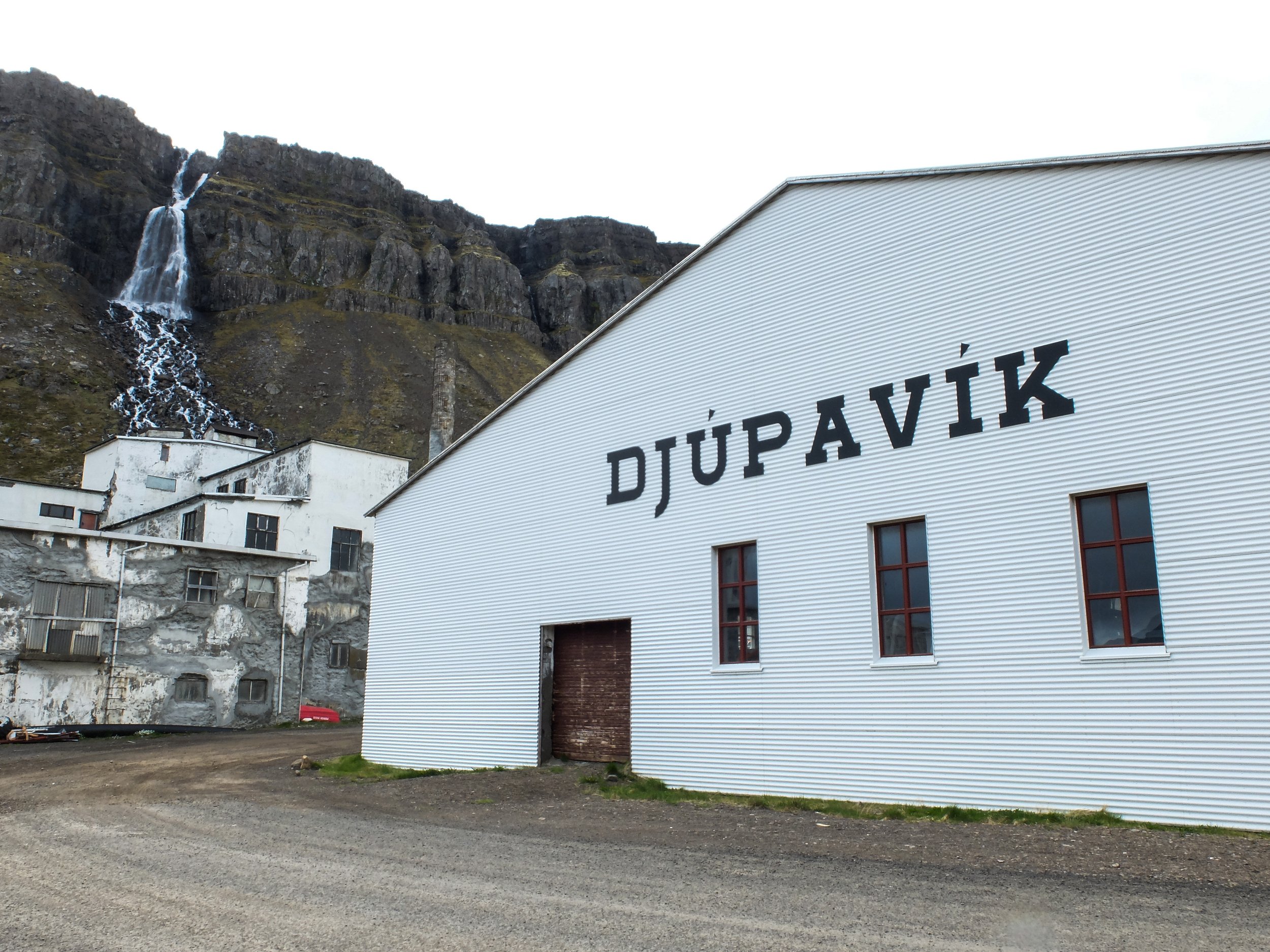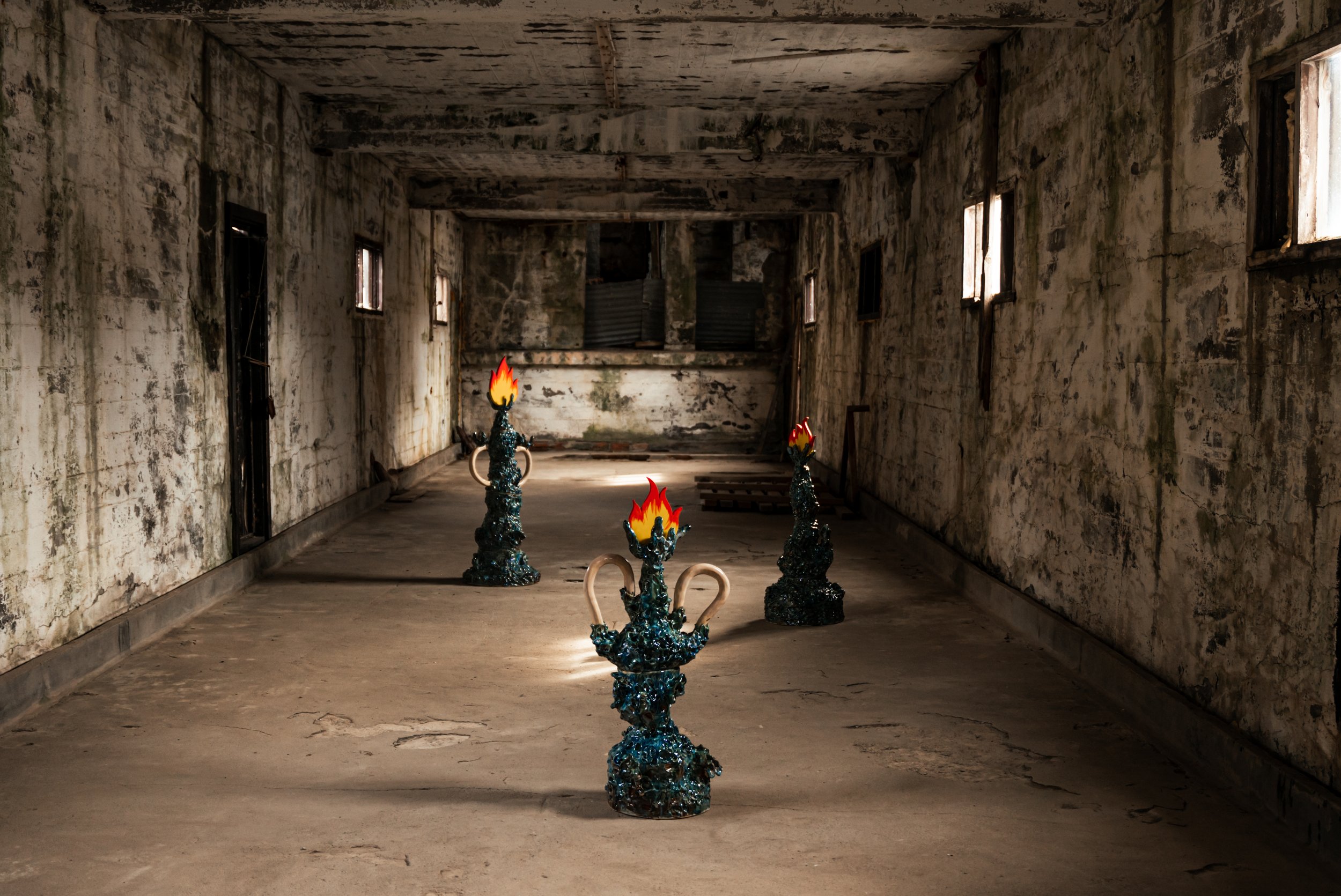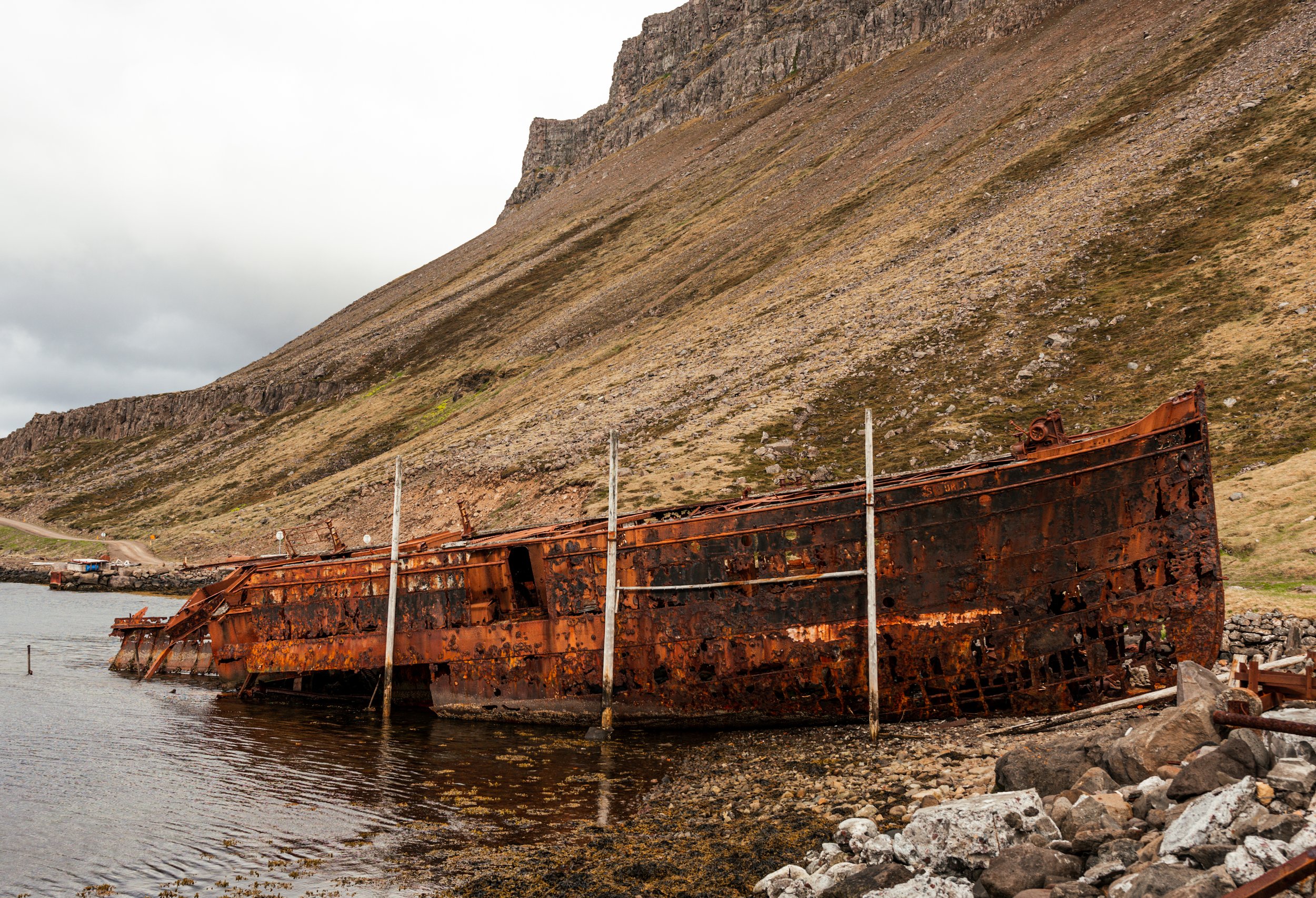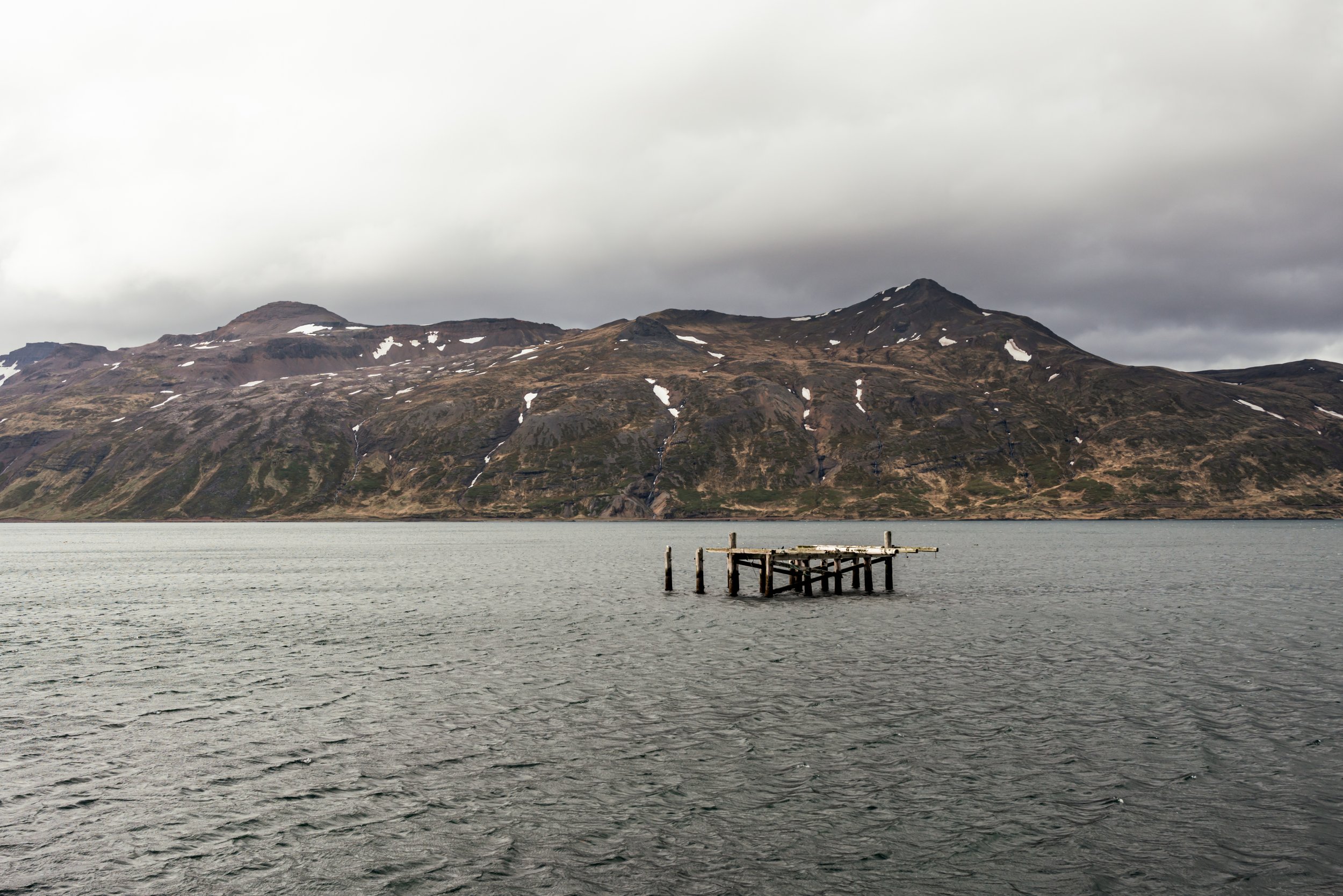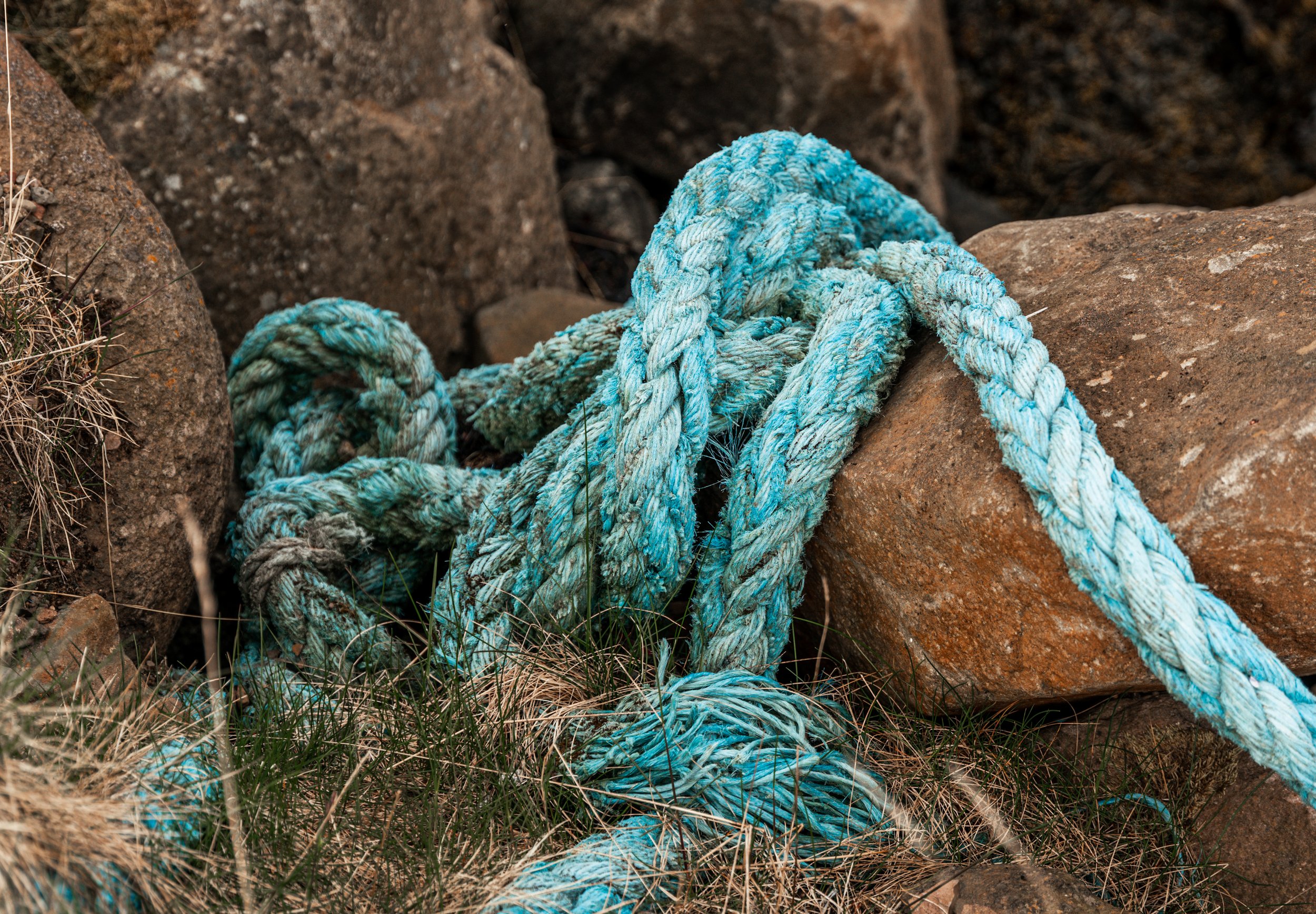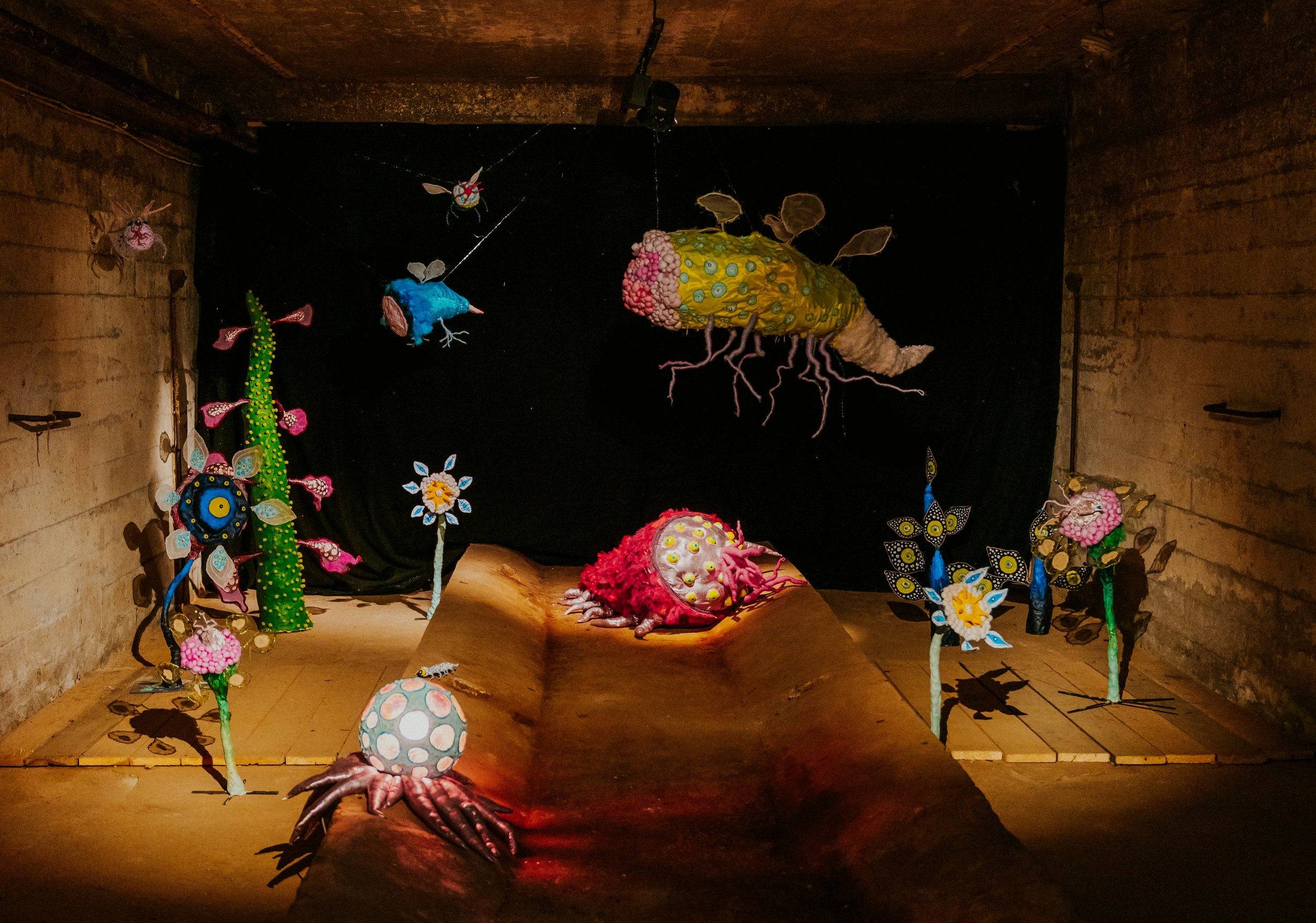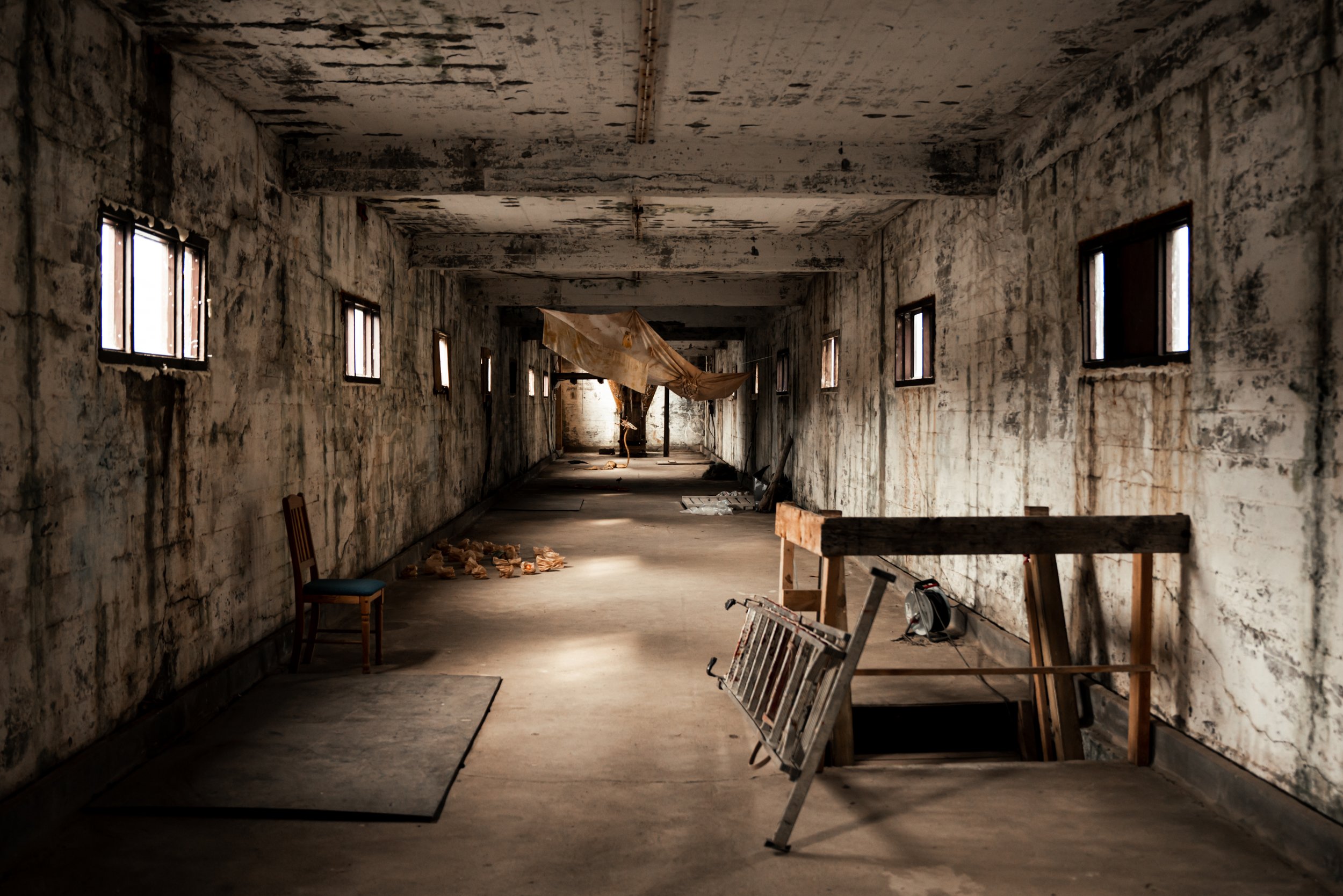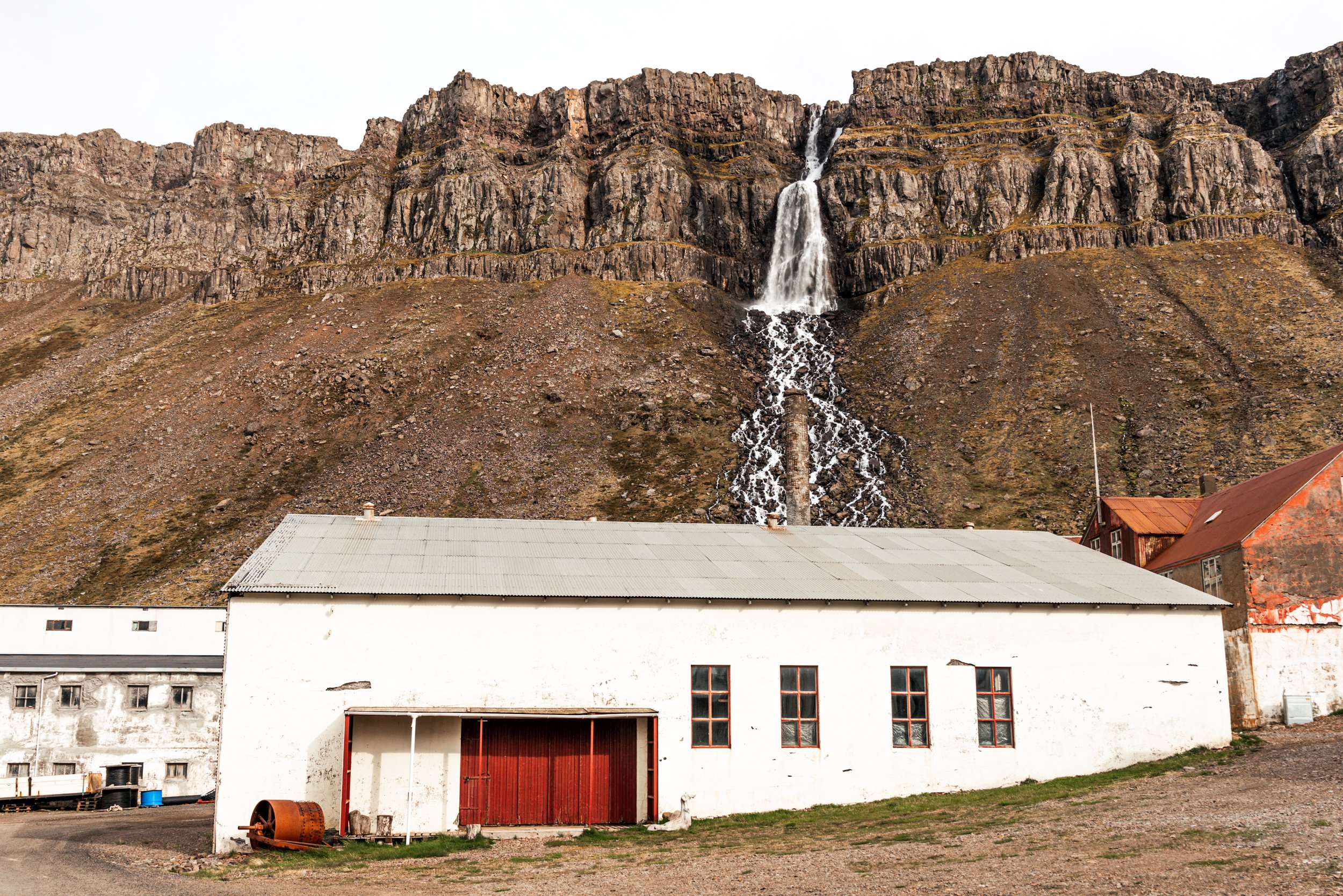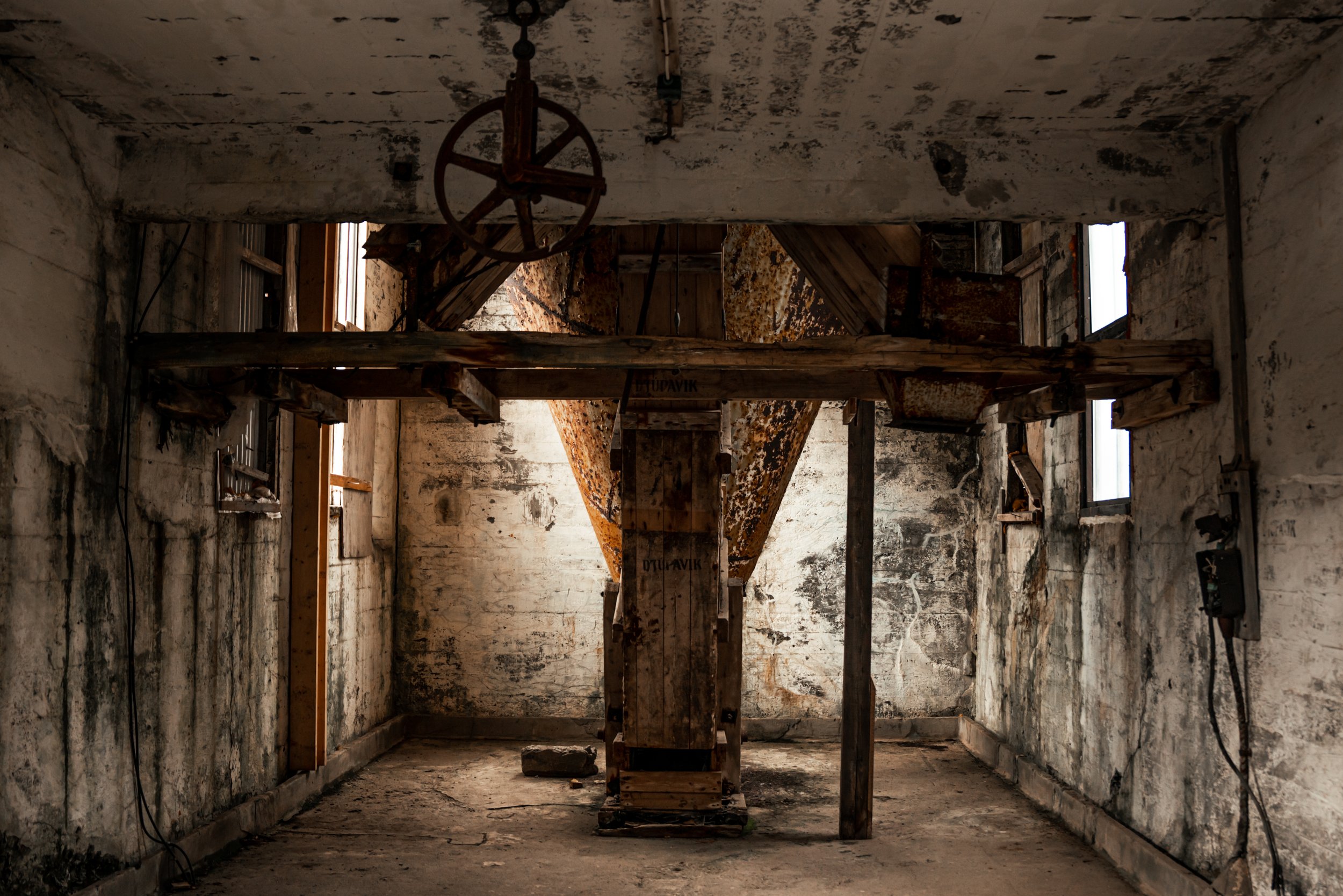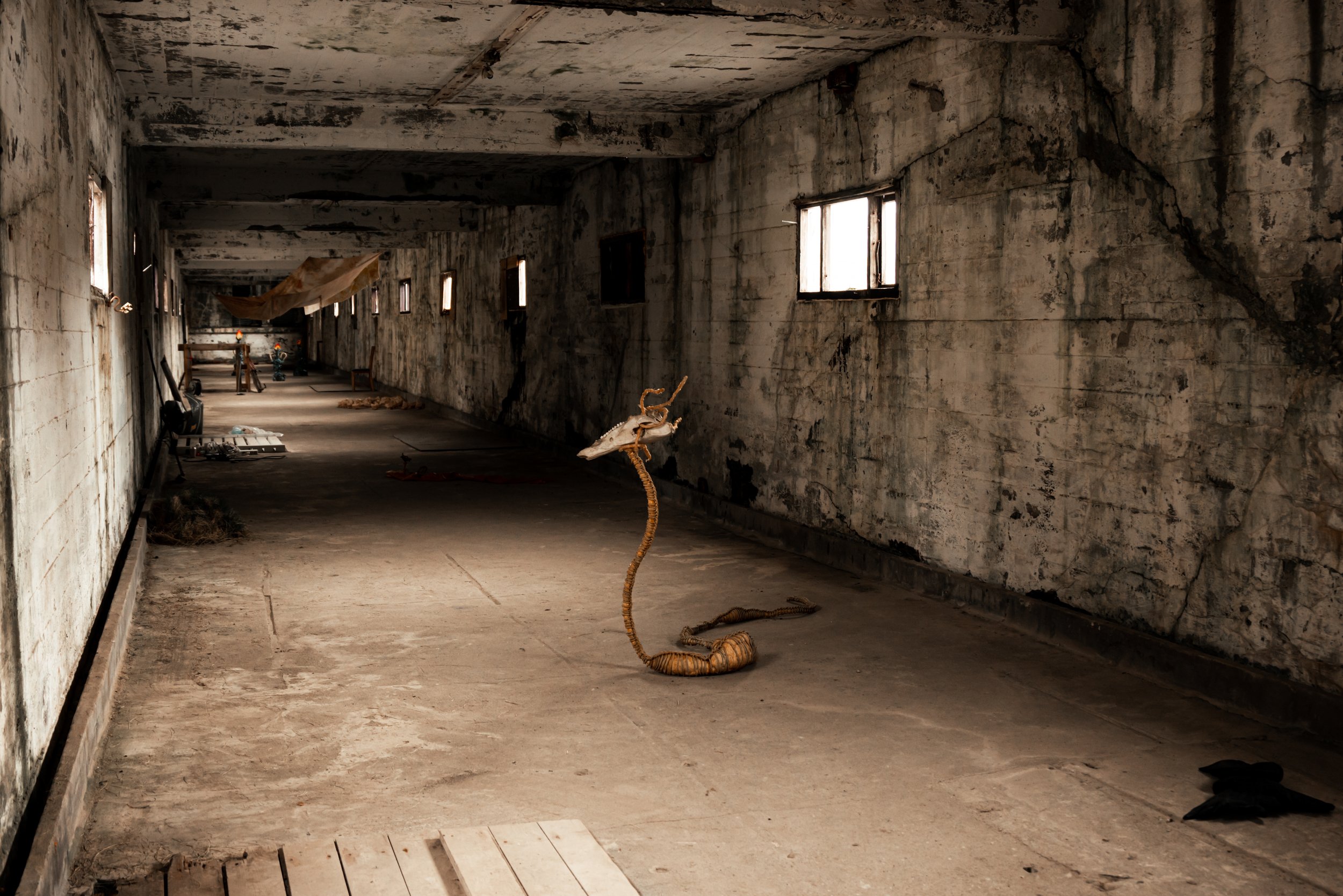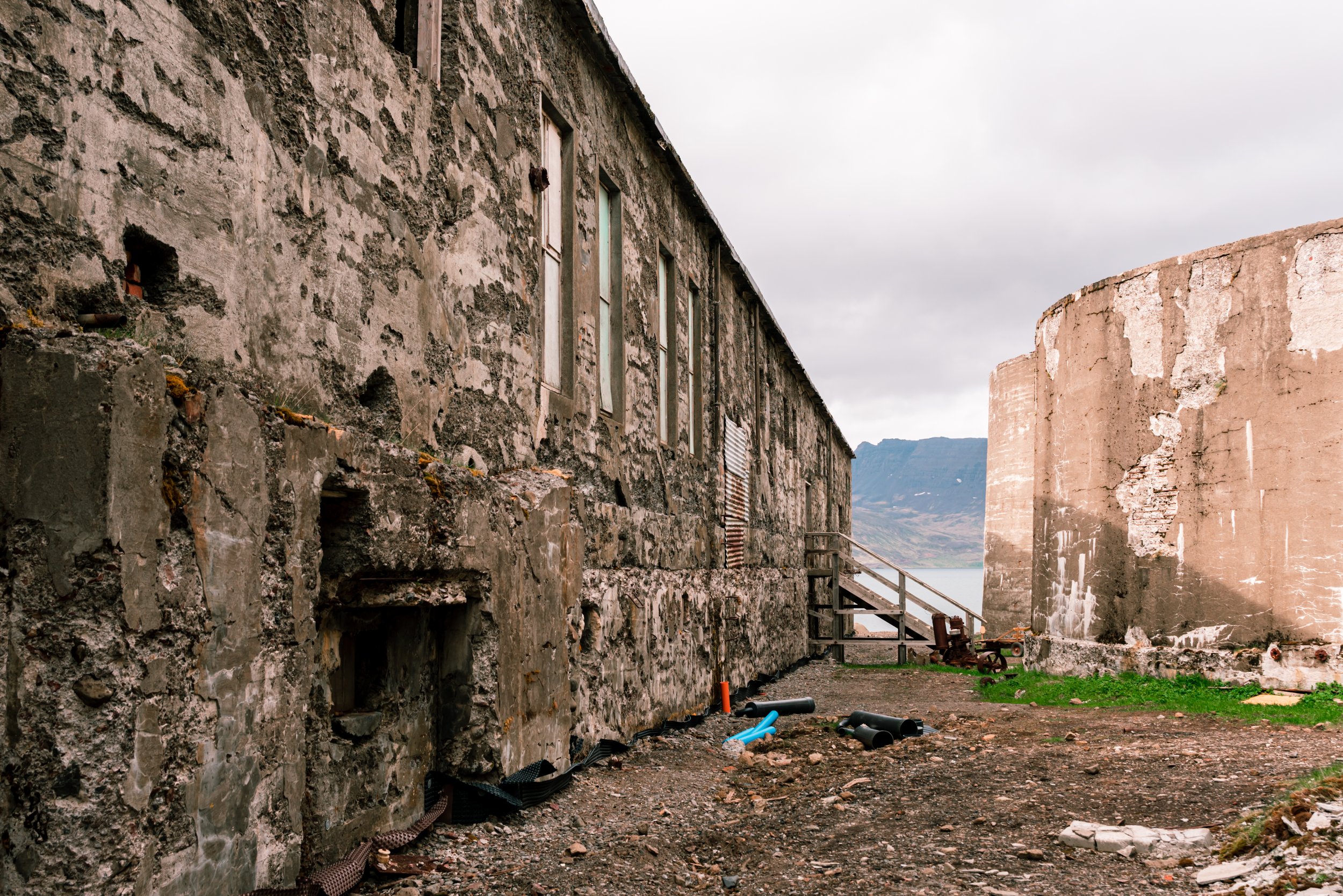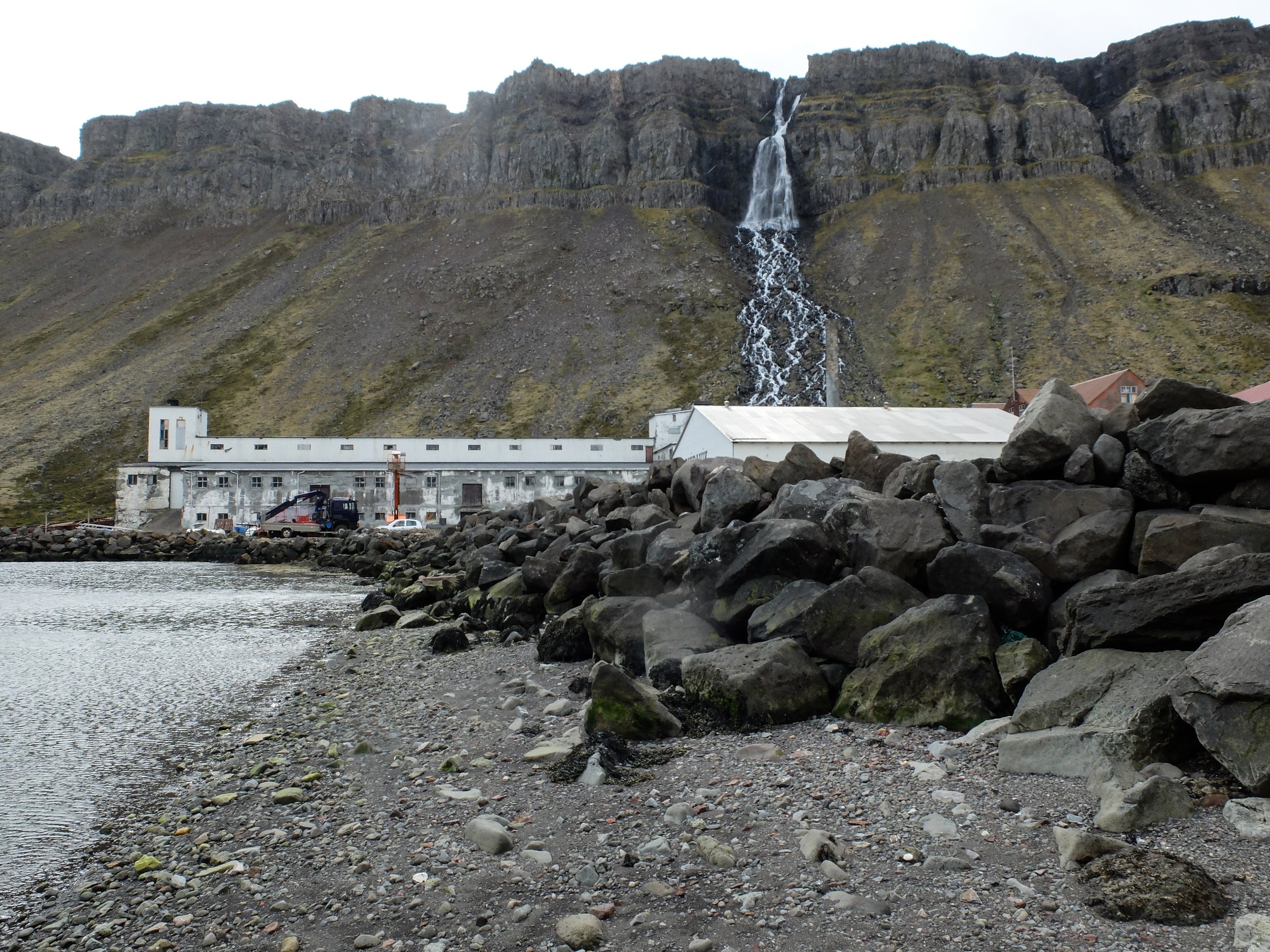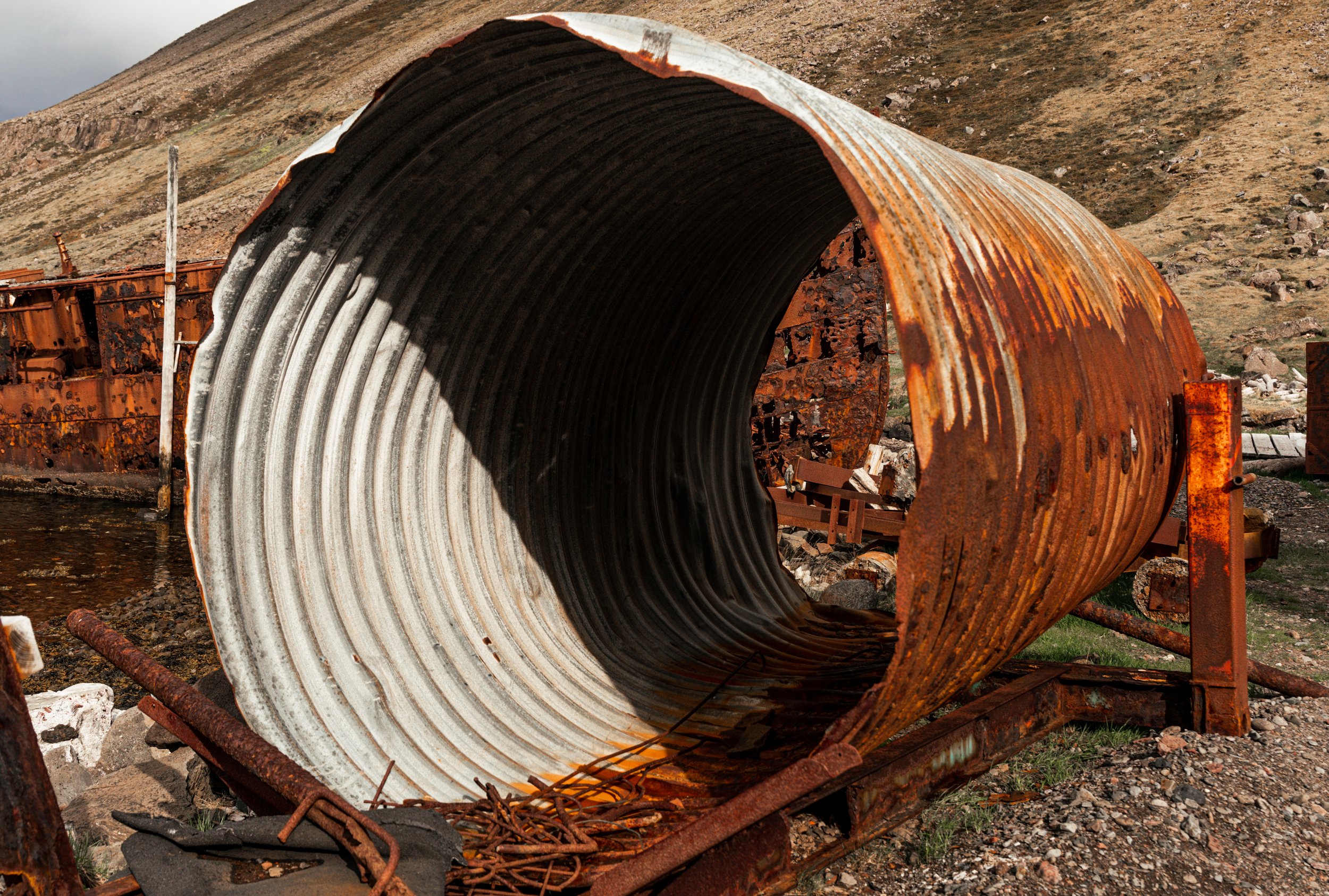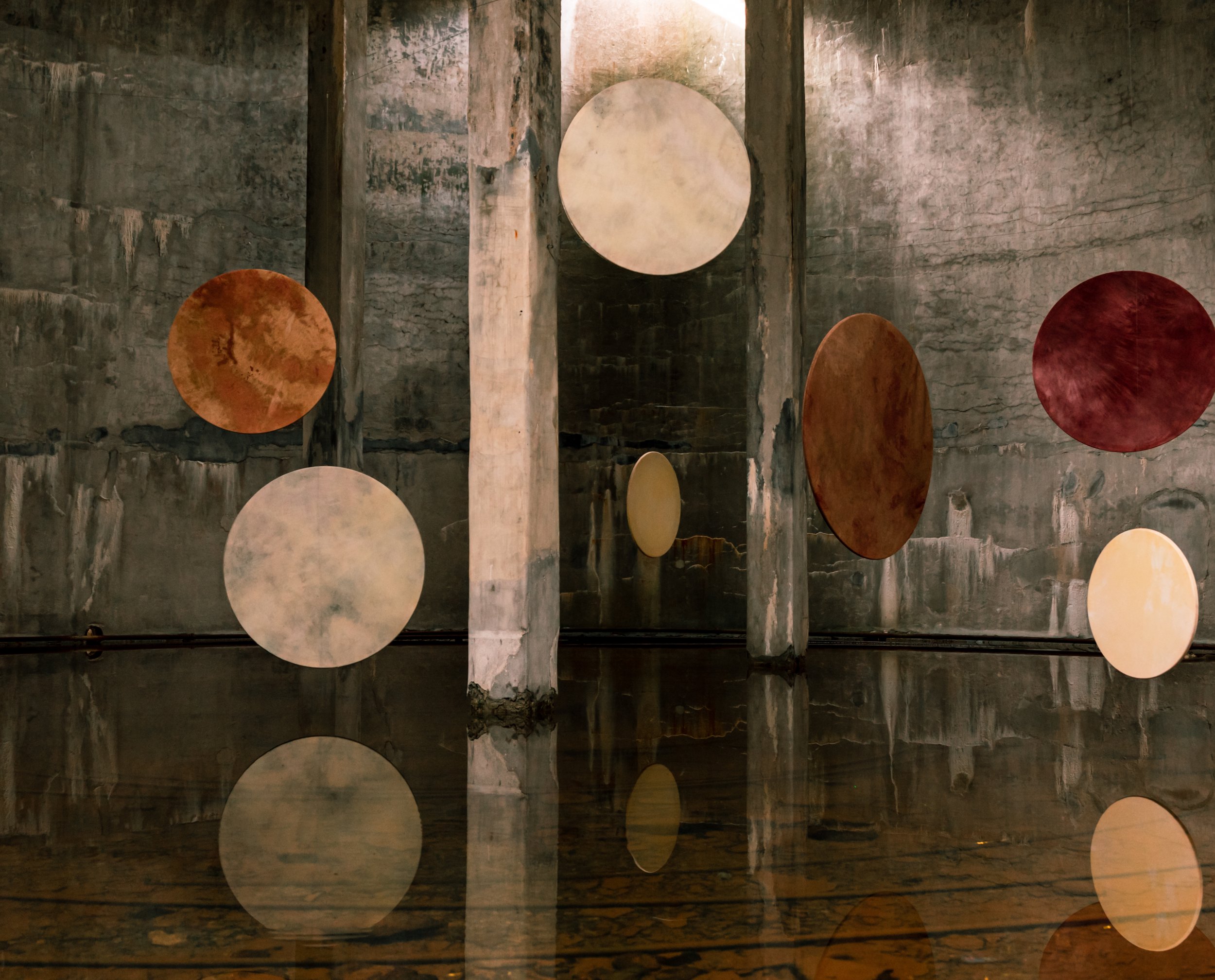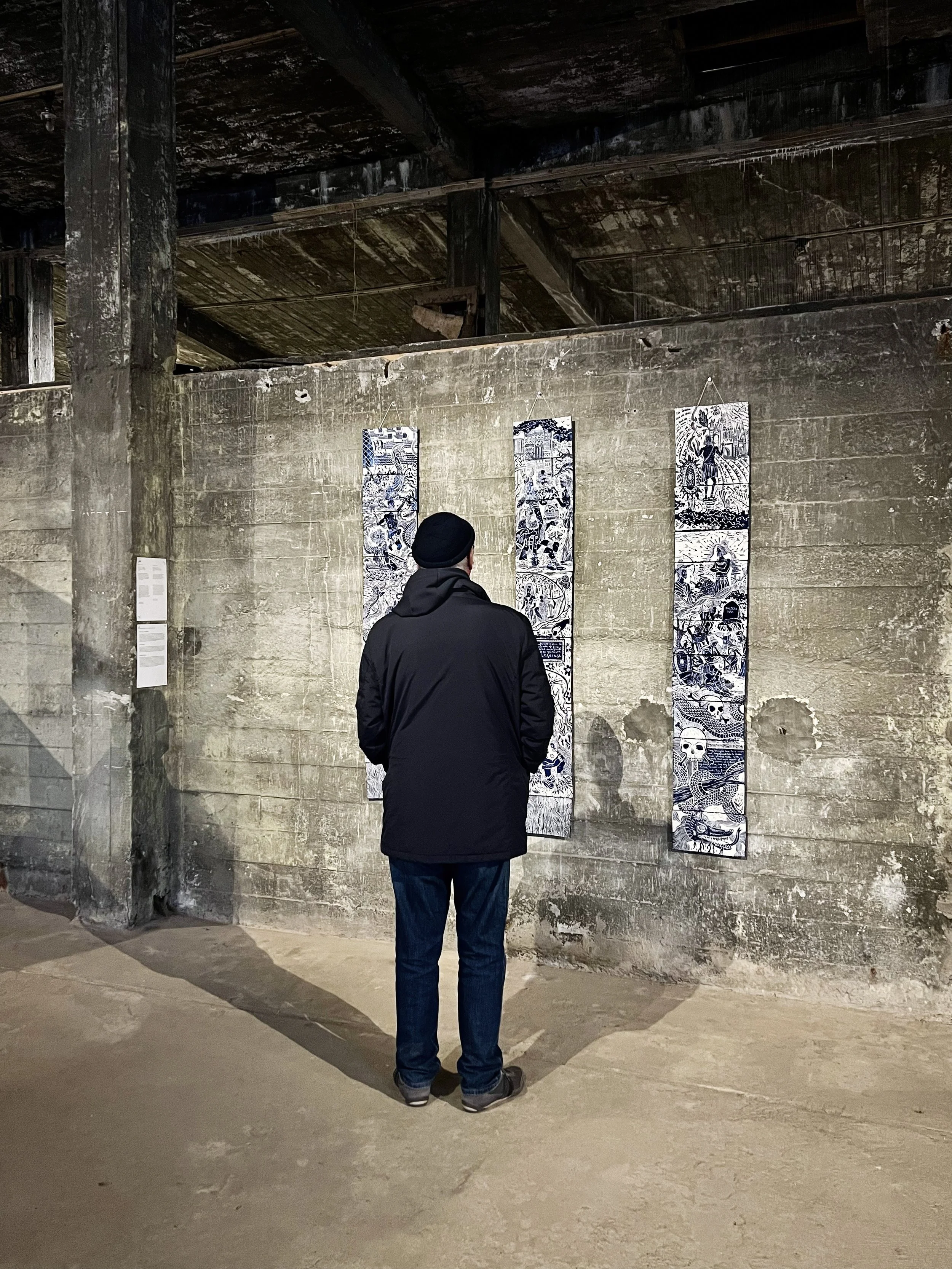“The Factory 2023”, art exhibition in Djúpavík, Iceland
The Factory is an annual group exhibition situated in the abandoned herring factory in Djúpavík in the Westfjords of Iceland. By integrating a broad variety of site-specific art, installations and sound, The Factory builds a bridge between the vanished fishing industry and contemporary art. Icelandic and international artists, emerging and established, are represented. Each work is inspired by the artist’s personal impressions of Iceland, ultimately (re)creating an exhibition space in conversation and in contrast with the surroundings of Djúpavík. The overall goal is to form a space of sensory explorations where past and present meet—a place for everyone to breathe, exist and be.
ph. Mikayla Graham
The eighth iteration of The Factory, Enchanting Portals, refers to passages through gaps, time, and realms. Drawing on the word “paganism,” all 13 artists have crafted sensitive installations which rise alone yet correspond—almost ritually—in the strange intimacy of the worn concrete walls. There is a comfort to the somewhat unreal setting: as we move between pieces derived or inspired by shamanic drums, the skull of a wild boar, and Norse mythology, we are reminded that life is never linear. Rather, life is a braid of chaos, divinity, stones, plants, animals, decay, growth, and birth. Stopping for a moment with that vision in mind, consider paganism’s worship of multiple gods and its belief of man-nature unison as the mystifying underbelly of the exhibition.
Artists:
Alda Ægisdóttir (IS)
Clara Holt (IT)
Ferrelyte (Kamile Pikelyte og Victoria Björk Ferrell) (LI / IS)
Florence Giroux Gravel (CA)
Gudrita Lape (IS)
Heimir Hlöðversson (IS)
Jana Rinchenbachová (CZ)
Jette Dalsgaard (DK)
Linnéa Falck (SE)
Maria-Carmela Raso (CA)
Nína Óskarsdóttir (IS)
Sofie Hermansen Eriksdatter (DK)
Hosted by Hótel Djúpavík
Curator: Emilie Dalum
My project consists of three vertical murals of handmade tiles, painted with blue slip and sgraffito decorated. Each tells a story from Norse mythology.
I. Thor and the Midgard serpent
Thor was a guest in the lands of the giant Hymir, father of the god Tyr, to procure a cauldron large enough to hold beer for all the gods. Thor, famous for his gluttony, devoured all the food present, leaving nothing for the next few days. The landlord then begged him to go fishing to procure something to eat.
Thor chose a large bull's head as bait, then threw it into the sea, hoping to catch something big.
Finally a tug nearly capsized the boat, but from the waters surfaced the fearsome snout of Jormungandr, the giant world serpent.
Hymir, terrified by the furious struggle between the god and the monster, severed the line with his knife, arousing Thor's wrath for causing him to lose his catch.
II. Iðunn's abduction
Iðunn is the goddess of youth and spring, wife of the god of poetry Bragi. She guards the miraculous apples that the gods eat to keep themselves young and vigorous.
The story goes that she was abducted by the giant Þjazi. Without Iðunn's apples, the gods began to grow old and decided to send the god Loki to rescue her. Loki turns Iðunn into a walnut, taking her away with him, but Þjazi changes into an eagle by flying in pursuit. The gods create a barrier of fire between whose flames the monstrous bird dies.
III. Baldr, the shining God
Baldr is Odin's second son and the most beautiful of the gods; he shines with his own light and his hair is as white as snow.
His mother has imposed a universal oath on all living creatures: nothing shall ever harm Baldr.
Since then the gods begin a game that they repeat every day at their gathering: they form a circle around Baldr by throwing any object at him because nothing could harm him anymore.
There is actually one plant that did not make this oath: the mistletoe.
Loki, the enigmatic god of disorder, sneaks up on Baldr's blind brother, puts the mistletoe in his hand, and guides him in throwing it. The mistletoe flies toward Baldr like an arrow, killing him and leaving the other gods astonished.
Loki escaped and lived in a house made of glass to see if the other gods would come for him. But the gods managed to catch him, took him to a cave where they chained him with a poisonous snake forever.


